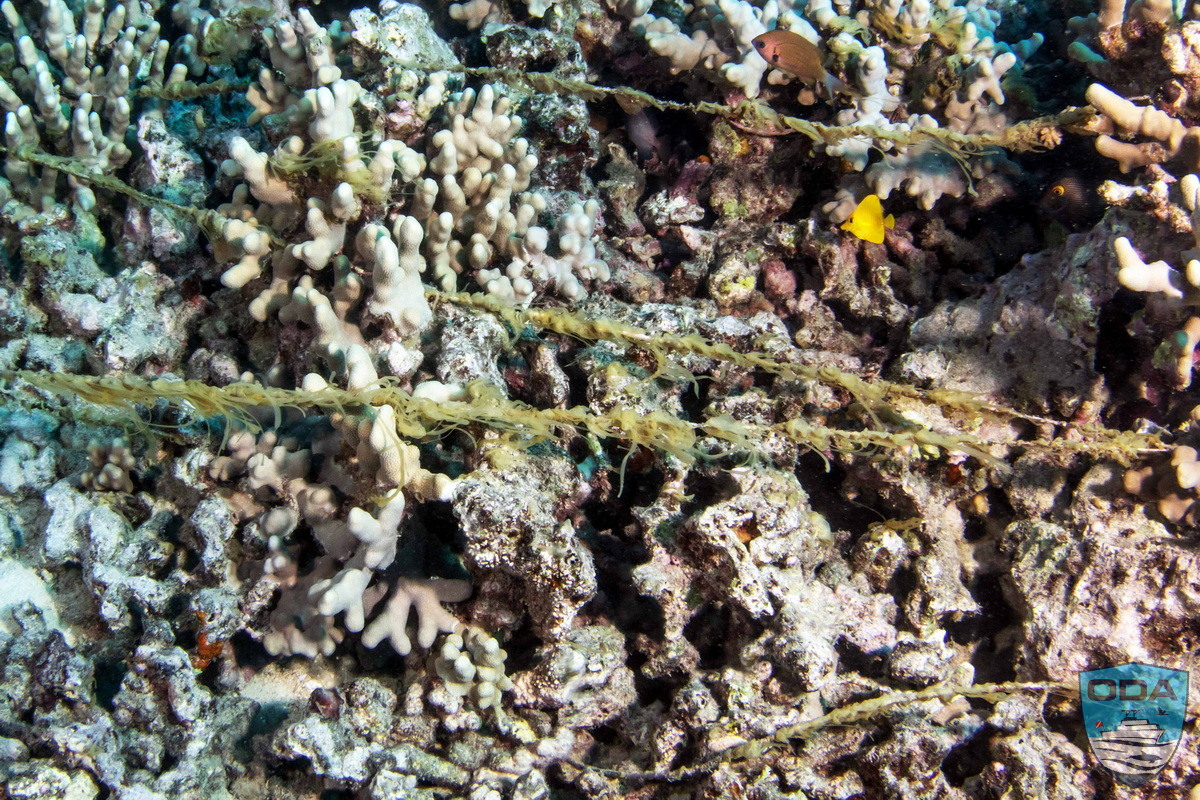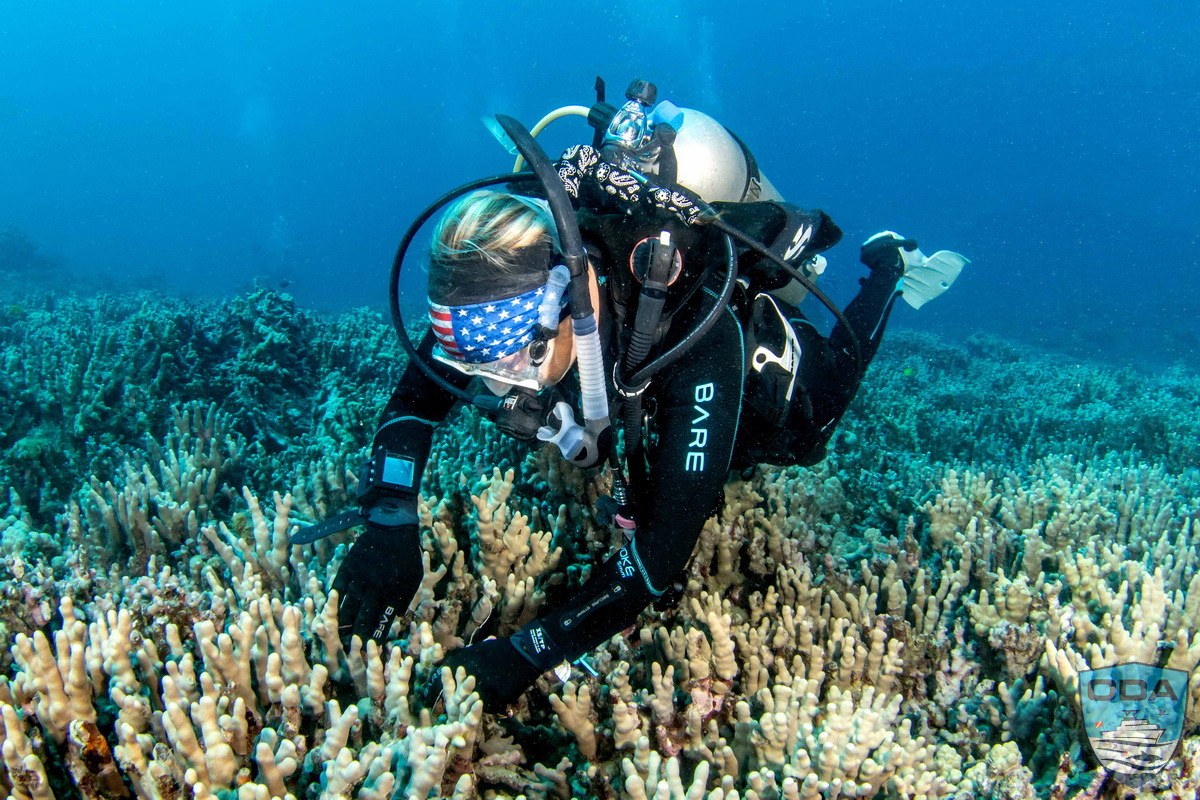On Hawai'i Island, Ocean Defenders Alliance (ODA) partners with Kohala Divers LTD (KDL), a great dive outfit that’s on the forefront of ocean conservation and debris cleanups on the north side of the island. We partner with them for monthly cleanups along Kawaihae harbor, and they also donate their boat for ODA cleanups at their moored dive sites! ODA's last adventure aboard their biggest boat, Namaka, went to Crystal Cove for a successful scouting mission - but this cleanup on October 5th was all business at a pre-scouted spot along the Kohala Coastline.
Kay Cooper, sustainability coordinator for KDL, heard reports of derelict fishing line at Black Point, one of Kohala Diver's northernmost dive sites, so that was the site of our debris-removal game plan. Conditions couldn't have been more pristine there this day, especially since this dive site is known for strong currents that can change quickly, and today there wasn't the tiniest trace of a current.

Our crew this day: Captain Keith Cabral and KDL Crew: Kay Cooper and Elias Roberts. Along with me was our ODA volunteer crew: Karen Bohner, Jacques Delorme, Garth Edwards, Kerry Edwards, Lucas Fuhrman, Donna Goodale, Todd Hackett, James Kregness, Bo Pardau (photographer), Jamie Pardau, Carolina Piel, Jonah Rondash, Doug Watson, John Warden, Dianne Warden, and Laurel Whillock.
We were broken up into two dive groups with Elias and Kay leading the way, and two volunteer crew, Jonah and James to help out. Divers immediately found buried fishing line, most of it completely encrusted with red corraline algae or other filamentous algae. This makes cleanup difficult because the line is very embedded into live, very fragile coral.
Sea Snips tend to be the best tool for this job – and impeccably buoyant – to cut ends of the line safely away from the coral, so we don't lose any coral pieces. This is time-consuming, but it's the best way to keep the reef intact and get rid of entanglement hazards and plastics. After an hour, we still saw there was much to do... but due to our tanks’ limited airtime, we all headed back to the boat for a surface interval and to look over our collection.
Man, were we all surprised by how much we hauled up with just one dive!!! We filled the 30-gallon bin almost up to the top – and there was still more down there. Since conditions were so optimal, the KDL staff decided we should stay at Black Point and conduct our second dive here as well.
Dive teams jumped in for dive number two after snacks and bubbly waters.
We surface swam just past our cleaning stop point from the first dive, and then descended down and immediately got to work. There didn't seem to be any fresh fishing line here, which tells me that the fishing site was once used heavily, and then perhaps abandoned, maybe due to less fish off the point than before. In these coastal waters, we see these occasionally fished underwater sites, and we also see heavily fished sites that are still regularly fished. I'm not sure why fishermen decided to stop fishing at Black Point – but we definitely found enough line to keep us busy for several more dives.
Towards the end, some divers also found a deeply-embedded net on the reef. Nets are typically made of plastics, and snag easily onto the reefs and can get “implanted” into the reef pretty quickly with water motion. These nets can be horribly destructive to a large section of reef. If any of the net still remains exposed and moving around, the “loose” end of a net will sway with any wave motion, slowly gnawing at the rest of the reef structure and eventually chewing up that entire area. Divers were limited on time, so removed the net where they could, cut where they could, and then relocated any corals that had become dislodged into that exposed area to help with regrowth.
Black Point was an excellent choice of dive site for a cleanup today. We estimated about 12,000 feet of line was pulled out today, (two 30-gallon bins were filled to the brim!), about 40 pounds of lead, 20 fishing hooks, some clothing, a net, some bottles, and even a food container was brought up in today's haul.
If it irritates you (as much as it does us!) to know that this ghost gear and rubbish is under the water’s surface wreaking havoc, please contribute to keep your ocean cleanup crew going!









